Intellectual Property Annual Report 2019-2020- Released!!
 The IPO released its Intellectual Property Annual Report for the year 2019-20. The Report shows that this year overall filing of applications for various IPRs (4,27,309) has been higher as compared to the previous year (4,05,324), exhibiting an overall increase of 5.42%.
The IPO released its Intellectual Property Annual Report for the year 2019-20. The Report shows that this year overall filing of applications for various IPRs (4,27,309) has been higher as compared to the previous year (4,05,324), exhibiting an overall increase of 5.42%.
Dr. Fixit fixes Trademark Infringement
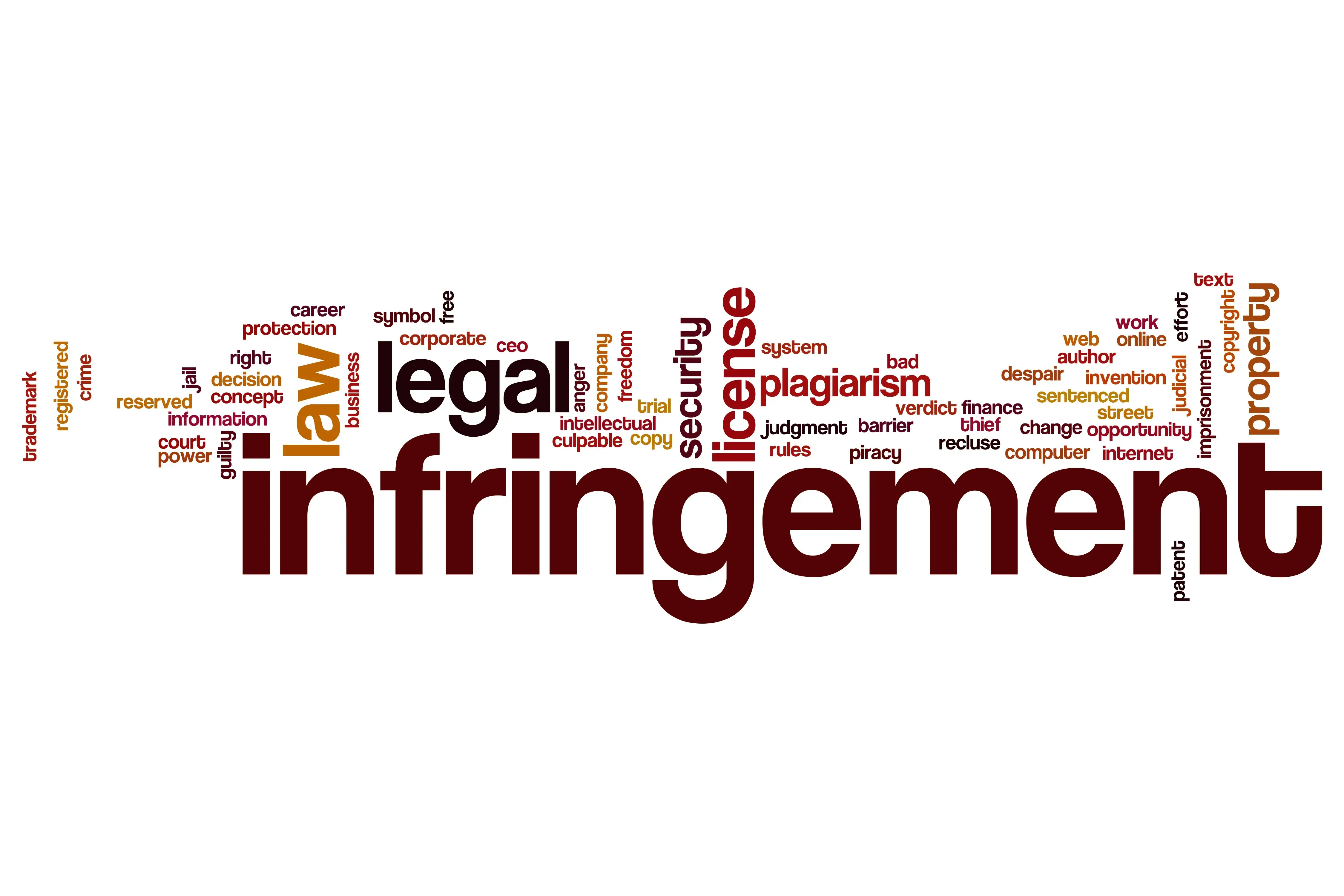 Recently the Bombay High Court in a trademark infringement case restrained Platinum Waltech Ltd. by an order of injunction from selling their waterproofing products under the mark LWC and from infringing Pidilite Industries’ trademark and design registrations as well as their copyright in their artistic work.
Recently the Bombay High Court in a trademark infringement case restrained Platinum Waltech Ltd. by an order of injunction from selling their waterproofing products under the mark LWC and from infringing Pidilite Industries’ trademark and design registrations as well as their copyright in their artistic work.
Interim Relief in favour of Natural Ice Cream in Trademark Infringement Suit
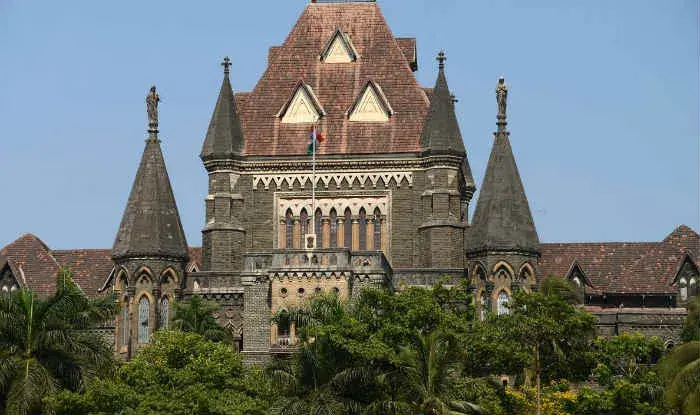 In a recent case, the Single Bench of the Bombay High Court dealt with the issue of granting an ad interim injunction in the case of trademark infringement and passing off. The case took an interesting turn of events when the advocate appearing on behalf of the defendant filed an affidavit in reply on behalf of a third party.
In a recent case, the Single Bench of the Bombay High Court dealt with the issue of granting an ad interim injunction in the case of trademark infringement and passing off. The case took an interesting turn of events when the advocate appearing on behalf of the defendant filed an affidavit in reply on behalf of a third party.
Liability of a Company’s Director
 Under Companies Act of 2013, certain liabilities of a Director have been charted out post the incorporation of a company. The said liabilities aid in the regulation of the demeanor of the director of a company.
Under Companies Act of 2013, certain liabilities of a Director have been charted out post the incorporation of a company. The said liabilities aid in the regulation of the demeanor of the director of a company.
Ministry forms panel for removing penal provisions from proposed Drugs Act
 The need to revamp the Drugs and Cosmetics Act, 1940 and free it from unnecessary criminal provisions has been gaining traction for some time now. Accordingly, a high-level government committee has been constituted to deliberate decriminalizing certain offences.
The need to revamp the Drugs and Cosmetics Act, 1940 and free it from unnecessary criminal provisions has been gaining traction for some time now. Accordingly, a high-level government committee has been constituted to deliberate decriminalizing certain offences.
How to prepare for India’s New Labour Laws?
 In order to bring the labour regulations in India into sync and consolidate archaic and bulky laws, the Government of India is taking a landmark step of codifying 29 laws into 4 codes.
In order to bring the labour regulations in India into sync and consolidate archaic and bulky laws, the Government of India is taking a landmark step of codifying 29 laws into 4 codes.
Intellectual Property Annual Report 2019-2020- Released!!

By Vikrant Rana and Ragini Ghosh
Intellectual Property Annual Report for the year 2019-20
The Office of the Controller General of Patents, Designs and Trade Marks (hereinafter referred to as the ‘Office of the CGPDTM’ or ‘CGPDTM’) strives to strengthen the IPR Framework of the country and provide a balanced and transparent ecosystem, in league with international standards. It aims to ensure timely delivery of IP services in a transparent and applicant-friendly manner while simultaneously simplifying IP procedures, creating a digital environment and resolving public grievances effectively. It endeavours to establish a vibrant and balanced IP regime in the country to support the country’s innovation and developmental objectives. The Office of the CGPDTM has made remarkable achievements in performance, delivery of IP services, and IT-enabled functioning this past year. CGPDTM has set up a prompt grievance redressal mechanism for stakeholders. Apart from regular stakeholder meetings held at various locations, the facility of Online Feedback Mechanism as provided on the website is now being increasingly utilized by those seeking prompt and efficient relief from difficulty. Improvement in IP administration, digital reforms and re-engineering of the IP procedures has resulted in improved performance efficiency, decreased pendency, and higher rate of disposal of IP applications, despite COVID-enforced lockdowns. Relevant steps were taken to revive IPO functioning post lifting of the lockdowns, and implementing efficient online functioning and work from home for officers and staff to ensure smooth operations with minimal delays. Towards nurturing bilateral co-operation at the international level, India launched the pilot programme of the Patent Prosecution Highway (PPH) with Japan in December 2019 and made significant contributions to the working of the WIPO.
With its responsibilities in mind, the Office on August 29, 2021, released its Intellectual Property Annual Report for the year 2019-20. The details of the activities performed by various offices under the CGPDTM during the year as well as the revenue and expenditure details of all offices under the CGPDTM and other relevant statistics are also included in it. Some of the highlights are mentioned in detail below:
The Intellectual Property Annual Report shows that this year overall filing of applications for various IPRs (4,27,309) has been higher as compared to the previous year (4,05,324), exhibiting an overall increase of 5.42%.
Trends in last five years with respect to filing of IP applications are shown below:

Patents
During the year, 56,267 patent applications were filed exhibiting an increase in filing of 11.1% as compared to the previous year. The trends of last five years in respect of patent applications filed, examined, granted, and disposed are given below. Disposal of applications includes patents granted/refused by the patent office and applications withdrawn and abandoned by the applicants. Further, during 2019-20, the percentage of domestic patents filed has increased to 20, 843 which is 37.05% of the total no. of patents filed as compared to 33.6% in 2018-19.
| 2015-16 | 2016-17 | 2017-18 | 2018-19 | 2019-20 | |
| Filed | 46,904 | 45,444 | 47,854 | 50,659 | 56,267 |
| Examined | 16,851 | 28,967 | 60,330 | 85,426 | 80,080 |
| Granted | 6,326 | 9,847 | 13,045 | 15,283 | 24,936 |
| Disposal | 21,987 | 30,271 | 47,695 | 50,884 | 55,945 |

Foreign Patent filings in India
Of the two (2) methods by which international applicants can file for protection of their patents in India, the break-up over the last year was 3,637 applications under the Paris Convention (a slight decrease of about 7% from the previous year’s figure of 3,911) and 28,832 applications under the PCT National Phase route (showing a modest increase of 7% from last year’s figure of 26,966).
The trend of PCT National Phase filing over the last 5 years is as below:
| 2015-16 | 2016-17 | 2017-18 | 2018-19 | 2019-20 |
| 28,248 | 26,492 | 26,404 | 26,966 | 28,832 |

Designs
During this year, a total of 14,290 design applications were filed, exhibiting an increase of 13.55% over the last year. The number of design applications examined was 13,642, showing an increase of 7.76%. Registration and disposal of design applications increased by 29.2% and 28.8% respectively in 2019-20 as compared to 2018-19.
| Year | 2015-16 | 2016-17 | 2017-18 | 2018-19 | 2019-20 |
| Filed | 11,108 | 10,213 | 11,837 | 12,585 | 14,290 |
| Examined | 9,426 | 11,940 | 11,850 | 12,661 | 13,642 |
| Registered | 7,904 | 8,276 | 10,020 | 9,483 | 12,256 |
| Disposal | 8,023 | 8,332 | 10,788 | 11,414 | 14,701 |
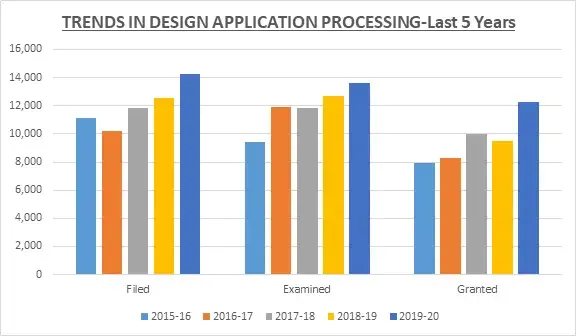
Trademarks
During the reported year, 3,34,805 trademark applications were filed. The number of applications examined is more than applications filed during this period and pendency in examination has been brought down to less than a month. The number of trademark registrations and disposals are less for the said year as compared to the earlier year as old pendencies from the last 3 years have been cleared.
| Year | 2015-16 | 2016-17 | 2017-18 | 2018-19 | 2019-20 |
| Filed | 2,83,060 | 2,78,170 | 2,72,974 | 3,23,798 | 3,34,805 |
| Examined | 2,67,861 | 5,32,230 | 3,06,259 | 3,37,541 | 3,38,551 |
| Registered | 65,045 | 2,50,070 | 3,00,913 | 3,16,798 | 2,94,172 |
| Disposal | 1,16,167 | 2,90,444 | 5,55,777 | 5,19,185 | 4,19,566 |

Applications under Madrid Protocol
Over the course of the reported year, the Indian Trade Marks Registry received 1,664 applications for international registration of trademarks under the Madrid Protocol, out of which 1,566 were verified, certified and transmitted back to WIPO and 1,218 marks were registered at the international level.


During the reported year, WIPO had notified a total of 14,001 international registrations also seeking protection in India. A total of 14,294 IRDIs were examined out of which 4,484 provisional refusals based on examination, and 939 provisional refusals based on third party oppositions were communicated to WIPO. 14,699 international registrations were granted protection in India within which 10,570 registrations were granted protection without the applicants even having to approach the Indian office. A total of 10,019 international registrations were refused protection in India the reported year.

Geographical Indications
During the reported year, a total of 42 applications were filed, 51 applications were examined, and a total number of 22 Geographical Indications were registered. The trends in GI applications filed, examined, and registered during the last five years are given below.
| Year | 2015-16 | 2016-17 | 2017-18 | 2018-19 | 2019-20 |
| Filed | 17 | 32 | 38 | 32 | 42 |
| Examined | 200 | 28 | 18 | 43 | 51 |
| Registered | 26 | 34 | 25 | 23 | 22 |

Copyrights
A total number of 21, 905 applications for copyright registration were received in the past year. 29,670 was the total number of applications examined during the year, and 16,029 copyright registrations were granted. Total number of application disposals was 22,516. The trends in copyright applications filed, examined, and registered during the last four years are given below.
| Year | 2016-17 | 2017-18 | 2018-19 | 2019-20 |
| Filed | 16,617 | 17,841 | 18,250 | 21,905 |
| Examined | 16,584 | 34,388 | 22,658 | 29,670 |
| Registered | 3,596 | 19,997 | 14,625 | 16,029 |
| Disposed | 5,444 | 39,799 | 25,943 | 22,516 |

Notable International Treaty Accession
During the year, Union Cabinet has approved India’s accession to the WIPO Copyright Treaty (WCT) and the WIPO Performers and Phonograms Treaty (WPPT), which extends coverage of copyright to the digital and online environment.
Patent (Amendment) Rules, 2019
Some of the key improvements brought about by the Patent (Amendment) Rules, 2019 are as below:
- Facility of Expedited Examination extended to a further 8 categories, in addition to the existing 2, namely:
- Start-ups;
- Small entities;
- Female natural persons (whether singly or as a joint applicant);
- departments;
- controlled institutions;
- company;
- Institution wholly or substantially financed by the Govt.;
- Application pertains to a notified sector;
- Application eligible under an arrangement between the Indian Patent Office and a foreign patent office.
- Transmittal fee for international application (under e-PCT filing) and fee for preparing and transmitting certified copy of priority document through WIPO DAS proposed to be waived;
PROCEDURAL IMPROVEMENTS IN OFFICE FUNCTIONS UNDER CGPDTM
PATENTS
- Commenced periodic publication of issued FERs;
- Patent grant certificate is now being sent directly to applicant’s email address;
- Implementation of facility for conducting hearings via video conferencing;
- Manual of Patent Office Practice and Procedure updated and uploaded on website.
TRADEMARKS
- Online search facility for classification of goods and services for trademarks has been further updated;
- Automatic allotment of applications for examination based upon date of filing.
- Automatic generation and despatch (by email) of Registration Certificates after completion of stipulated time after publication;
- Automation of renewal process and update (for renewals filed within time).
COPYRIGHTS
- Started displaying list of applications received during a month and status of pending and disposed applications on the Copyright Office website for universal stakeholder access;
- Introduced provision to upload soft copy of literary/artistic/dramatic works through online portal to facilitate seamless registration;
- Draft Copyright (Amendment) Rules notified on May 30, 2019.
IT INFRASTRUCTURE IMPROVEMENTS AND ENHANCED DIGITIZATION
During the year, IT infrastructure of the CGPDTM Office were upgraded at all locations to cope with increased digitization of services and processing. Especially during the period of the COVID pandemic, this enabled officials to operate from home, ensuring uninterrupted online transactions and communications with stakeholders over e-mail.
Comprehensive e-filing facility for patents, designs and trademarks is now available 24×7 via the payment gateway.
Feedback mechanism through IPO website has been set up to promptly address stakeholder grievances and queries.
INITIATIVES FOR START-UPS
- Substantial fee concession provided to start-ups under Start-Up India Scheme, i.e. 80% fee concession in patent applications and 50% concession for trademark applications, in filing and all subsequent procedures;
- SIPP Scheme launched to provide access to Start-Up facilitators whose professional charges will be borne by the Government, thereby making their professional services free for the start-up enterprises.
Related Posts
Dr. Fixit fixes Trademark Infringement
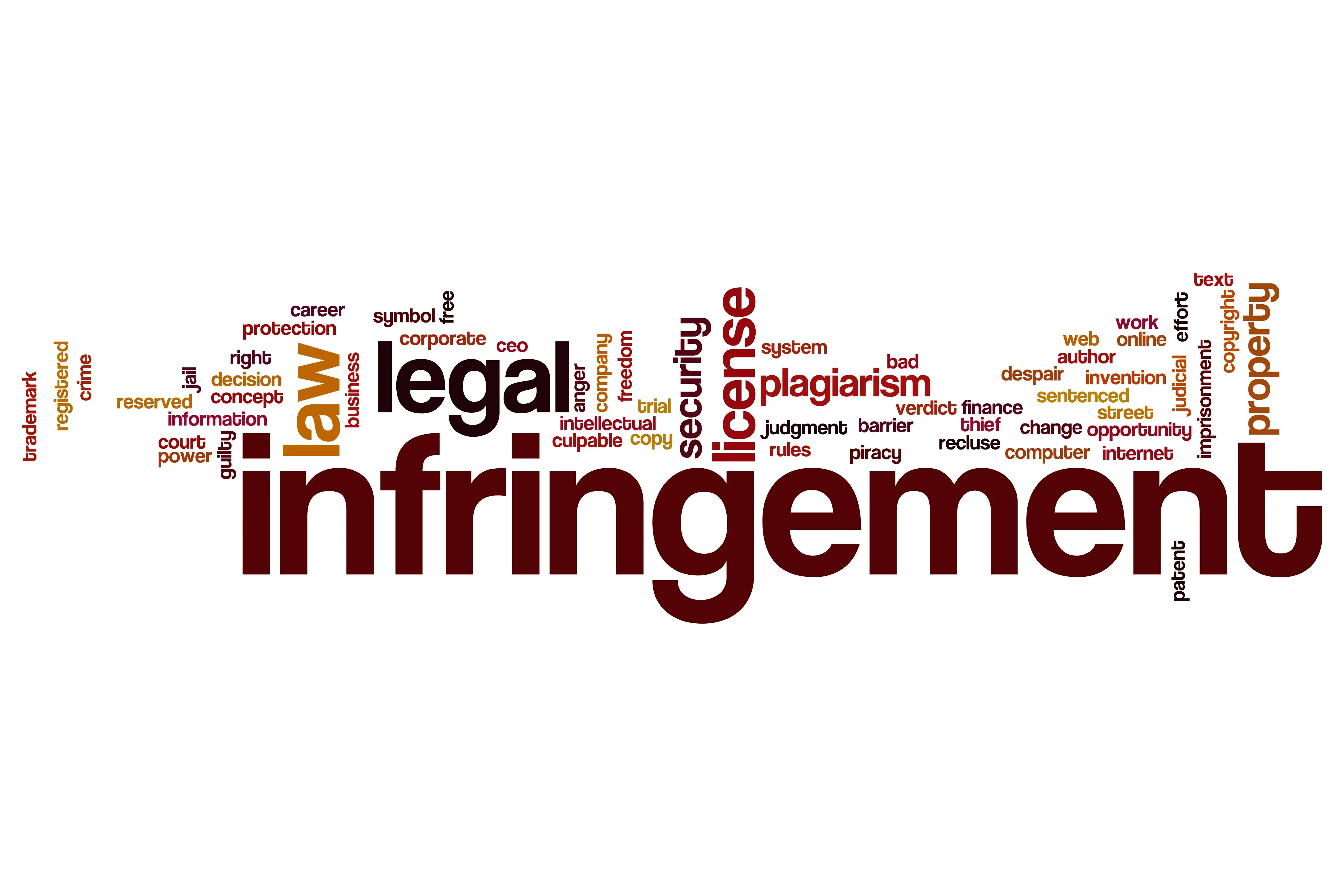
By Arpit Kalra and Pranit Biswas
CASE ANALYSIS: Pidilite Industries Ltd V/S Platinum Waltech Ltd


Recently the Bombay High Court in a trademark infringement case restrained Platinum Waltech Ltd. (Defendants) by an order of injunction from selling their waterproofing products under the mark LWC and from infringing Pidilite Industries’ (Plaintiff) trademark and design registrations as well as their copyright in their artistic work.
CONTENTIONS OF THE PLAINTIFF
- That Plaintiff is a well-known manufacturer and a vendor of waterproofing chemicals, construction bonding chemicals, materials, additives and other products relating to the construction and paint industry and has a worldwide presence.
- That Plaintiff has adopted and used several house marks upon its range of products which include the DR FIXIT mark with a distinctive device of a man wearing a yellow construction helmet and have trade mark registrations for the same. This device mark is a crucial part of their overall house mark and is an essential feature of most of its registered trademarks. The Plaintiff has used this distinctive label/mark to promote various products over the years and thus has acquired significant reputation and goodwill in the mark of the man in a yellow construction helmet.
- That LW and LW+ are the oldest products of the Plaintiff within the DR FIXIT The mark LW continues to be used as a product identification mark within the range of products. An improved variant was launched in 2009 under the mark LW+. The LW and LW+ products within the DR FIXIT range are specially formulated compounds composed of a surfactive plasticizing agent, polymer and additive.
- That the Plaintiff has adopted and has continuously without any interruption been using these marks since 1993.
- That the Plaintiff’s label for the DR FIXIT range including LW and LW+ is distinctive and features a unique yellow-gold and blue colour combination in horizontal bands. The container has a distinctive appeal which includes elevated ridges and grooves on both sides, a particular canary yellow cap, unique shaped handle and the Plaintiff has valid and subsisting design registrations for these containers.
- That the Plaintiff has eight trade mark registrations for both LW and LW+ and has also made considerable expenses on promotion and advertising of their products on television and elsewhere.
(Note: Few of the registrations that the Plaintiffs have depended upon and that are mentioned in the said order have been enumerated below)
Trademark Registrations
| S. no. | Registration No. | Application Date | User claim | Trade Mark | Class |
|
1. |
2447182
|
December 12, 2012
|
March 01, 2011
|
 |
01 |
| 2. | 2472730 | February 05, 2013
|
February 04, 2010
|
 |
02 |
| 3. | 2472713 | February 05, 2013
|
February 04, 2010
|
 |
02 |
| 4. | 2448212 | December 24, 2012
|
March 01, 2011
|
 |
19 |
| 5. | 2447181 | 21/12/2012 | 05/07/1998 |  |
19 |
| 6. | 2308686 | 30/03/2012 | 30/03/2022 |  |
19 |
Design Registrations
| S. no. | Registration No. | Application Date | User claim | Design |
| 1. |
212886 |
January 23, 2009 | January 23, 2009 | 
|
| 2. | 212887 | January 23, 2009 | January 23, 2009 |  |
DEFENSES BY THE DEFENDANT
- That LWC, the label, the device and the containers are trivial and the law does not aid trivialities.
- That use of LWC is purely descriptive and stands for ‘liquid waterproof / waterproofing compound’.
- That the man portrayed on their packaging is more youthful than that portrayed on Plaintiff’s packaging. The colour of the beard along with the placement of man in the yellow construction helmet is also different on both the containers.
TABLE OF COMPARISON
| PLAINTIFF | DEFENDANT |
It has encompassed whole of the LW mark and just added a letter ‘C’ to it |
|
 Plaintiff’s unique and a prior adopted device of the man wearing a tie and a yellow construction helmet |
 The Defendants have clearly imitated the concept of a man wearing a tie and a yellow construction helmet. |
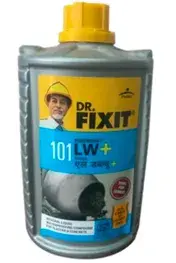 Plaintiff’s packaging has a unique colour combination of yellow-gold, grey and blue. Additionally, the packaging also sports elevated ridges on both sides. |

The colour combination is the same. The look of the container along with the elevated side ridges has been entirely copied. |
FINDINGS OF THE COURT
- The DR FIXIT, the LW/LW+ labels and the artistic work and copyright in these vests with the Plaintiff as evidenced by their registrations and worldwide reputation enjoyed by them in the same.
- The Defendant’s product container is almost indistinguishable from that of the Plaintiff’s. It has similar elevated ridges in the same colour scheme including the yellow cap. Additionally, it also features a similar man wearing a tie and yellow construction helmet.
- The use of LWC by the Defendant is not in the sense of an abbreviation of ‘liquid waterproof compound’ but is prima facie being used from a trade mark perspective. The Defendant has just added the letter ‘C’ on the Plaintiff’s mark LW and claiming it to be an abbreviation instead.
- The Defendants have not provided any bona fide reason for the adoption of the mark or the date of adoption of the same. Additionally, there is nothing to support or that can rationally explain the reason behind the adoption by the Defendants of the statutorily- protected design of the Plaintiff’s container.
- Given the large scale of sales and advertisements of the Plaintiff’s products it is impossible that the Defendant did not know the Plaintiff’s products and their huge market presence when their products are known throughout the length and breadth of this country.
- The court itself faced a great difficulty to distinguish the products in one look. Therefore the general public can readily imagine the Defendant’s product to be one of the variants of the Plaintiff’s products and label.
ANALYSIS
Even though the Defendants endeavored to justify the adoption of the mark LWC and pointed out differences in their packaging including the placement of details on both the containers, the same was not enough to satisfy the court. The inefficiency on their part was of not providing user detail and reason for adoption of such similar packaging and design. In trademark infringement and passing off cases, minute details are not seen separately, it is the packaging and the overall look-and-feel of the product which matters, as the actual test is if a person of average intelligence and imperfect recollection is able to differentiate and perceive that the products emanate from different sources, as was observed by Hon’ble Mr. Justice G.S. Patel. The first look of both the containers was an instant give-away of the malafide intention of the Defendant behind adoption of such packaging.
Sulagna Goswami, Associate at S.S. Rana & Co., has assisted in the research of this article.
Related Posts
Interim Relief in favour of Natural Ice Cream in Trademark Infringement Suit
Interim Relief in favour of Natural Ice Cream in Trademark Infringement Suit
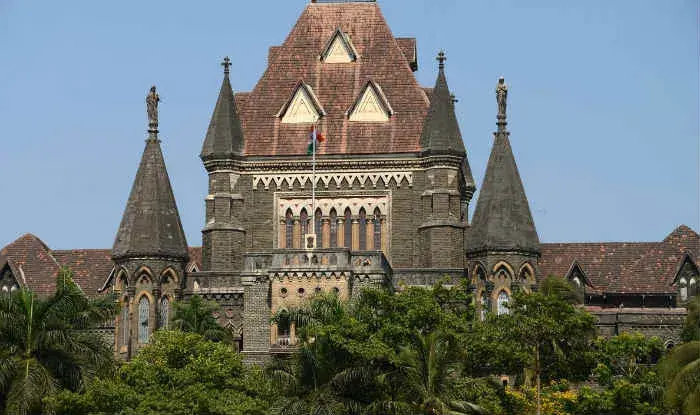
By Lucy Rana and Priya Adlakha
A Single Bench of the Bombay High Court in Siddhant Icecreams LLP and Ors. Vs Natural Ice Cream and Anr.[1] dealt with the issue of granting an ad interim injunction in the case of trademark infringement and passing off. The case took an interesting turn of events when the advocate who had been appearing on behalf of the defendant filed an affidavit in reply on behalf of a third party.
Facts:
Raghunandan Kamath (hereinafter referred to as Plaintiff No. 3) promoted Siddhant Icecreams LLP (hereinafter referred to as Plaintiff No. 1) and Kamaths Ourtimes Icecreams Pvt. Ltd. (hereinafter referred to as Plaintiff No. 2), which operated the business for manufacturing, selling and distributing ice cream and related products through their ice cream parlours under the NATURAL family of marks, which had been adopted in 1984.The plaintiff obtained the following trademark registration known as the Natural Family registered trademark –
| Application Number | Trademarks |
| 3177579 |  |
| 3177573 |  |
| 3177578 |  |
| 3177580 |  |
| 641592 |  |
| 1143035 |  |
| 1209159 |  |
| 1209160 |  |
Natural Ice Cream (hereinafter referred to as Defendant no.1), operated an ice cream parlour, using the impugned mark “NATURAL” in Manjalpur, Vadodara and Sanman Patel (hereinafter referred to as Defendant No.2) was its proprietor.
The plaintiff had claimed that the defendant runs and operates an ice cream parlour using a rival mark NATURAL in Manjalpur, Vadodara called ‘Natural Ice Cream’ and were advertising their ice cream business under the mark NATURAL on Facebook, Instagram as well as Zomato. The parlour signage had a legend ‘since 1992’.
Plaintiff’s submissions:
- That the plaintiff is in the business of manufacturing, selling and distributing ice cream and related products through their ice cream parlours under the “Natural” marks which had been adopted by Plaintiff No.3 in 1984.
- That the Defendants were advertising their ice cream business under the rival mark NATURAL on Facebook, Instagram and were using the email id “naturalmanjalpur@gmail.com”.
- That the Defendants’ names is also visible on the Zomato application, along with a parlour signage with the legend “since 1992”, while it has only opened recently.
- That the defendants are misrepresenting their goods and passing them off as the plaintiffs’ products.
Defendant’s Submissions
The defendants filed no affidavit in reply, however, the advocate who had been appearing on behalf of the defendants, filed an affidavit in reply before the Hon’ble Court in the name of Ambrish Chauhan, who was the authorised representative of Varshaben Avinashbhai Chauhan, the sole proprietor of the entity “Natural Ice Cream & Cold Drinks”.
Court’s Observations
The Hon’ble Court took note of the fact that the Defendant No. 1 is not “Natural Ice Cream & Cold Drinks”, but rather “Natural Ice Cream”, and thus the affidavit in reply filed on behalf of Ambrish Chauhan could not be taken into consideration, and that the third party would have to file an impleadment application to become a party to the suit.
The Hon’ble Court observed that the plaintiffs had made out a prima facie case against the Defendants, and since the actual defendants had failed to file an affidavit in reply, an ad-interim injunction in terms of the plaintiffs’ prayer clauses (a), (b) and (c) must be granted.
Conclusion
Therefore, the Court granted an ad interim injunction as per the prayer clauses (a), (b) and (c) of the Interim Application, which are as follows:
- That pending the hearing and final disposal of the suit, the Defendants, their subordinates, agents and all other persons claiming under or through the Defendants be restrained by an order and injunction of this Hon’ble Court from infringing any of the Plaintiffs’ NATURAL Family of Registered Marks, in any manner and from using the impugned mark NATURAL or any other mark similar to the NATURAL Family upon or in relation to any goods or services for which the NATURAL Family of Registered Marks are registered or upon or in relation to any goods or services similar thereto and from selling, offering for sale (either directly from their ice cream parlour or through Zomato or through any other platform or any other manner), advertising, or dealing in any products or rendering any services(including ice cream parlor or through Zomato or through any other platform or any other manner), advertising or dealing in any products or rendering any services (including ice cream parlour services) under the impugned mark or any mark similar to any of the NATURAL registered marks and from using the impugned mark or any other mark similar to the registered marks as part of the Defendants’ business name or trading style or upon or in relation to any products, signage, business card, packaging, advertisement or on the Defendants’ social media pages or in relation to Paytm online or any other online or mobile playment platform and from using the email address ‘naturalmanjalpur@gmail.com’ or any other email address having Natural or any other mark similar to the registered marks as a part thereof;
- That pending the hearing and final disposal of the suit, the Defendants, their subordinates, agents and all other persons claiming under or through the Defendants be restrained by an order and injunction of this Hon’ble Court from passing off their goods, business or ice cream parlor as that of or as connected with or associated with the Plaintiffs’ in any manner and from using NATURAL as part of the Defendants’ business name or trading style and from selling or offering for sale(either through ice cream parlor or through Zomato or through any other goods under or bearing or in relation to which the impugned mark NATURAL is used or under or bearing or in relation which any mark similar to any of the Plaintiffs’ NATURAL Family Marks are used and from using the impugned mark NATURAL or any other mark similar to the Plaintiffs’ NATURAL Family Marks in relation to any ice cream parlors in any manner or on the Defendants’ social media pages and from using the email address ‘naturalmanjalpur@gmail.com’ or any other email address having NATURAL or any other mark similar to the NATURAL Family Registered Marks as a part thereof and from using the impugned mark NATURAL in any manner;
- That pending the hearing and final disposal of the suit, the Defendants, their subordinates, agents and all other persons claiming under or through the Defendants be restrained by an order and injunction of this Hon’ble Court from using or displaying or depicting the impugned mark NATURAL or any mark resembling or similar to any of the NATURAL Family Marks upon or in relation to the Defendants’ signage, business card, packaging, advertisement or in relation to Paytm online or any other online mobile payment platform indicating or suggesting that the Defendants are authorized franchisees or dealers of the Plaintiffs or that the Defendants are related to, connected or associated with the Plaintiffs or in any manner passing off the Defendants’ business as authorized, franchised or connected with the Plaintiffs or the Plaintiffs’ business;”
The ad interim order will continue to operate till November 24, 2021.
Author’s Comments
The Hon’ble Bombay High Court has precisely noted that the parties “Natural Ice Cream and Cold Drinks” and Ambrish Chauhan could not file an affidavit in reply since they had no standing before the court, and could only have sought impleadment. Furthermore, noting the fact that the actual Defendants had failed to file an affidavit in reply before the court, and had appeared only once the order was being dictated, an ad interim injunction could be granted in favour of the plaintiff due to the prima facie nature of the case.
[1] COMMERCIAL IP SUIT (L) NO. 13957 OF 2021
Related Posts
Liability of a Company’s Director

The Companies Act 2013 is the statutory authority governing the happenings of a company from its inception till dissolution including its responsibilities and the duties vested upon its directors. Under the same, certain liabilities of a Director have been charted out post the incorporation of a company. The said liabilities aid in the regulation of the demeanor of the director of a company. A further analysis of the same may be dwelled into through this article.
Personal Liability
Personal Liability may be defined as liability which is held against a single individual for an act. Whilst generally speaking the liability of a company is not transferred upon its director, the Companies Act, 2013 has been vested with certain conditions under which such liability may be imposed, mostly with respect to fiduciary responsibilities. Some such circumstances are as follows:
- Tax Liability
If Section 179 of the Income Tax Act 1961 may be examined, in the instance that dues from a private company cannot be recovered or the tax assessed is not found to be recoverable, in such a scenario, when any private company is wound up and the tax assessed cannot be recovered, then the director, or directors are jointly liable for the same. It is for the Director to show that the default of the company was not attributable to any breach of duty on his part.[1]
- False Statements
If false statements are meted out by a Director with respect to his company, he may be held personally liable for the same unless it can be proven that the said statements were made in true faith, or withdraws consent with respect to the same via a public declaration of its falsehood.
- Company Debts
With regards to the debt of a company, or the debts owed, a director cannot personally be held liable for the same unless it may be deduced that the same is the result of indulgence in fraudulent activities by the director in which case, personal liability is vested.
- Fraudulent Business Conduct
If a director is seen to be indulgent in undertakings which are contrary to the visions or interests of his or her company, personal liability may be vested for such acts especially if they are malicious in nature.
- Liability with respect to Shareholding
In the circumstance that a company goes bankrupt or begins to undergo the process of liquidation, the personal stakes held by the director with respect to his or her shares and shareholding in the company would vest personal liability upon the director.
Criminal Liability
- Dishonored Cheques
If a director of a company knowingly or willingly signs a cheque which is deemed to be dishonored, he can be held criminally liable for the same as a result of willingly abetting financial fraud or malfeasance.
- Labor Law offenses
The ambit of Labour Laws in India is very vast in nature. Each statute pertains to a different aspect of the same. Compliance with the labour laws is sine qua non and must be ensured by the director of a company. If there is seen to be a breach of the same under the supervision or instructions given by a director, he or she may be held criminally liable for the same.
Vicarious Liability
The concept of vicarious liability mandates that an individual is deemed to personally hold liability for the wrongful acts of another individual. It has been held by the Supreme Court that the director of a company cannot be held liable on behalf of the company unless such act has statutory backing. Further, only if there is significant evidence to prove that a person played an active role in the wrongdoings only then, specific liability can be imposed.
Conclusion
Until and unless a person is held accountable for his/her act he might do any act in pursuance of his interest. Therefore it becomes utmost important for a business to make sure that none of its members are sacrificing the interest of the business for fulfilling his/her own motives. Every company must have a well-planned out evaluation mechanism in order to assess the work of its directors. However, it must be made sure that any rigid mechanism of evaluation will interrupt the effectiveness of the director’s work who is in charge of running the company. The principle of equity which lays down that no person can be made liable until and unless he’s a party to the commission of offence or he’s aware of the offence also applies while assessing the liability of a Company’s Director.
To know more about Company Law, read below:
[1] Gurudas Hazra v. P.K.Chowdhury.
Related Posts
GST on remuneration of Directors- CBIC issues clarification
Ministry forms panel for removing penal provisions from proposed Drugs Act

The need to revamp the Drugs and Cosmetics Act, 1940 and free it from unnecessary criminal provisions has been gaining traction for some time now. Accordingly, a high-level government committee has been constituted to deliberate decriminalizing certain offences and omitting certain penal provision provided in the Act for quality related failures or defaults.
The eight-member committee, headed by the Drugs Controller General of India (DCGI), Dr. V.G Somani, and further comprising of a few State level drug regulators along with an official from the Health Ministry is set to draft new legislations for drugs, cosmetics, and medical devices to replace the present Drugs and Cosmetic Act, 1940.[1]
What is Drugs and Cosmetics Act, 1940?
The Drugs and Cosmetics Act was enacted to regulate the manufacture, import and distribution of drugs across India, and ensure that consumable chemical products, namely drugs and cosmetics, and also medical devices reaching consumers are effective, safe and conform to the quality norms set out by the Act. The original act was formulated based on the recommendations of the Chopra Committee, constituted in 1930 by the pre-Independence Government of India, under the leadership of Mr. R.N. Chopra. The term “drug” as defined in the Act covers a wide range of chemical substances, including therapeutic formulations and medical devices. “Cosmetics” under the Act means any article meant to be applied to the human body whether by means of sprinkling, spraying, rubbing or pouring on, for the purpose of cleansing or beautifying oneself. The Act also encompasses Ayurvedic and Unani drugs. The Drugs and Cosmetics Act has been amended many times since its enactment.
Why the proposed changes?
The present Drugs and Cosmetics Act regulating pharmaceuticals and cosmetics is prosecutable and lays down stringent penalties, both penal as well as financial (i.e. imprisonment and fine), in the event of sub-standard/spurious drugs, medical devices and cosmetic products. Under the present Act, a manufacturer accused of allegedly producing sub-standard/spurious products can be imprisoned even before the investigation is complete and his guilt proven and declared. Such provisions have been abused towards causing harassment to competitors or other innocents, and has also been a de-motivating factor for the industry as a whole. Thus, upon recommendations put forward by several stakeholders, including the Indian Drug Manufacturers’ Association, Bulk Drug Manufacturers Association, the Indian Pharmaceutical Alliance (IPA) representing the country’s biggest drug manufacturers, the Federation of Pharmaceutical Entrepreneurs, and other industry associations, the committee has, in principle, accepted their propositions to do away with penal provisions in cases where a patient has not actually been harmed, prior to establishing guilt of an accused, and preferring financial penalties instead. Keeping in mind the delay in disposing of cases in India it is unfair to detain an individual undertrial only upon suspicion as opposed to proof of guilt.
Conclusion
As per the Ministry of Health, the expert committee is expected to submit a draft Bill by November 30, 2021. While the move is hoped to be a progressive one, especially in delivering relief to unconvicted undertrials in harassment cases, the Bill will have the unenviable task of having to strike a fine balance between harassment cases and increasing cases of fraud and spurious drugs and other medical and consumer products, at a time when we are seeing a surge of counterfeit consumables amidst desperate consumer demand.
E- Pharmacies- New Law to Regulate Drugs and Medical Devices
How to prepare for India’s New Labour Laws?

In order to bring the labour regulations in India into sync and consolidate archaic and bulky laws, the Government of India is taking a landmark step of codifying 29 laws into 4 codes, namely-
- Code on Wages 2019
- Code on Social Security 2020
- Industrial Relations Code 2020
- Occupational Safety, Health and Working Conditions Code 2020
Between 2019 to 2020, all the 4 codes were passed by the Parliament after receiving assent of the President of India. It is pertinent to be noted that the codes are yet to be implemented and is continually getting delayed as several state governments are yet to introduce the code in their respective states. At present, a total of 15 states have published the draft rules under the Code on Wages and the Code on Industrial Relations. These states include:
- Gujarat
- Karnataka
- Madhya Pradesh
- Rajasthan
- Uttar Pradesh
Other states such as Orissa, Chhattisgarh and so on have put together rules under the Code on Social Security as well as the Occupational Safety & Health Code.
The four codes provide for the following new elements:
-
THE CODE ON WAGES, 2019[1]
This code applies to the employees working in organized and unorganized sector. The primary intent behind the code is to manage wage and bonus payments in every sector and also to instill equity amongst the employees working under similar circumstances in different sectors. The Code further mentions that there will be no more scheduled work, and minimum salaries will be based on talent and region. Managers as well as supervisors are covered by minimum wage and wage payment regulations.[2]
The Code, on the surface, strengthens accountability by requiring the preservation of documents, including regular audits of all employers. It also specifies the types of deductions and fines that can be levied against an employee’s earnings.
New definition of Wages[3]– The code provides a new definition of ‘wages’.
The following, payable to a person in respect to his employment, have been included under the definition:
| S no. | Particulars |
| 1) | All remunerations in terms or money or capable of being so expressed. |
| 2) | Basic Pay |
| 3) | Dearness Allowance |
| 4) | Retaining Allowance |
The provision further lists as to what are not to be included within this definition. These are:
| S no. | Particulars |
| 1) | Any bonus which does not form a part of the remuneration to be paid. |
| 2) | Value of house-accommodation |
| 3) | Electricity Charges |
| 4) | Water Charges |
| 5) | Medical expenses |
| 6) | Other amenity/ service excluded from the computation of wages by order of the Government. |
| 7) | Contribution paid by the employer towards pension or provident fund, and the interest thereon. |
| 8) | Conveyance allowance or travelling concession. |
| 9) | Sum paid to defray special expenses entailed by the nature of employment. |
| 10) | House rent allowance. |
| 11) | Remuneration payable under any award or settlement between the parties or order of a court or Tribunal. |
| 12) | Overtime allowance. |
| 13) | Commission |
| 14) | Gratuity on termination. |
| 15) | Retrenchment compensation, retirement benefits or ex gratia payment on termination. |
For calculating the wages under this clause, if payments made by the employee exceeds one-half, or such other per cent of the all remuneration calculated under this clause, the amount which exceeds such one-half, or the per cent. is to be deemed as remuneration and thus, accordingly added in wages.
Floor Wages- The code also sets out floor wages for minimum wages.[4] Each state will have to set a minimum wage above this floor. The purpose behind this move is to assure workers of a basic income nationally. This would especially be more beneficial in the instances of inter-state migration. The projected effect in the construction business would be large-scale emigration of labour in quest of the best emoluments and least demanding working circumstances.
Gender Neutrality- the code also furnishes provisions for gender neutrality for the purpose of paying wages. The code extends this equality to a person of every gender which also includes transgender employees.[5]
Conflict Resolution- Another feature of the Code is that there is no one unified conflict resolution board or committee that deals with all issues between an employee and management. Rather, there are several options for a setup that is problem centric in its operation. For example, if a woman is discriminated against in the workplace, she must seek redress from “such authority as may be notified by the appropriate government,” whereas for issues pertaining to the payment of dues or arrears, the employee must reach “one or more authorities” with the power and authority of a civil court.
This body will not have the ability to decide disputes involving an employee claiming her bonus or being underpaid her bonus, since such issues would be resolved by the Industrial Tribunal or another body established under the Industrial Disputes Act. Furthermore, an officer in the state government with the rank of undersecretary has the authority to impose a punishment at any time after conducting a cursory investigation.
The Code also gives employees and trade unions the authority to file direct complaints with the Magistrate, allowing the employer to be held to ransom. Strict penalties and jail for violations – all directors/persons in charge of the firm are subject to penalty. The fine imposed is 100 times that under the previous legislation.[6]
The aforementioned adjustments suggest that there will be an overall rise in complying convenience. However, this is dependent on how state governments implement these laws; if states choose to follow the Centre’s lead, compliance with the Code on Wages, 2019, will be simple and uncomplicated.
-
CODE ON SOCIAL SECURITY, 2020[7]
The present code consolidates 9 laws pertaining to social security and maternity benefits.
Gig Workers- The code for the very first time defines ‘gig worker’[8] as comprising of those who work for companies such as Uber, Ola and so on. A distinction has been made from the traditional employer-employee relationship as the companies would not be burdened under the same liabilities as are imposed on them for their full-time workers. However, the companies are expected to contribute to a social security fund, established by the Government, for these workers.[9]
Gratuity provisions[10]– The most important change in the new social security legislation will result in gratuity terms. Gratuity will now be paid by a company to both permanent and fixed-term workers. This is paid at the rate of 15 days’ earnings for each year of service performed. The gratuity provisions apply when 10 or more employees are employed on any day in the previous twelve months. Gratuity becomes payable after an employee has completed five years of continuous service. This obligation, however, does not apply to fixed-term employees. They would be compensated on a pro-rata basis. Gratuities would be payable even if workers hired a contractor. As a result, a company must plan for the payment of gratuities to even its contractual staff.
Maternity benefits[11] – Maternity benefits would be available if ten or more employees were hired on any day in the previous 12 months. No company is required to employ a woman for six weeks after her delivery, miscarriage, or termination of pregnancy. However, this benefit is only accessible to female workers who have worked for at least 80 days in the previous twelve months. Furthermore, a maternity benefit of up to 26 weeks can be claimed and any violation of maternity benefits will subject the employer to jail for up to 6 months or a fine of up to Rs.50,000.
Consequences for non- compliance with the required Social Security payment under the Code[12]– If an employer fails to make any payment required by the Code or its rules, directives, or schemes, he will face the following penalties:
- imprisonment for a period of one year, which may be extended for a total of three years
- Failure to pay the employee’s share, which he would withdraw from the employee’s earnings, will result in imprisonment for up to 6 months and a fine of 1 lac.
In addition to this, unlike before, the code now restricts the authorities to looking back only five years to check compliance with all rules relating to the Employees’ Provident Fund. It also requires that all investigations must be completed within a period of 2 years.
-
THE OCCUPATIONAL SAFETY, HEALTH AND WORKING CONDITIONS CODE, 2020[13]
This particular code seeks to regulate the safety, health and working conditions of workers employees in establishments functioning with 10 or more workers, including mines and docks.
Under this Code, every employer is required to undertake the following[14]:
- guarantee that the workspace is devoid of dangers that cause or are expected to cause harm or occupational illness to workers, and that this is done in accordance with the Code and government guidelines;
- offer complimentary annual health examinations or tests to specified categories of employees;
- provide and retain, as far as is fairly possible, a working atmosphere that is secure and clear of hazard to the employees’ wellbeing;
- issue letters of appointment to employees; and
- make sure that no cost is imposed on any worker for the upkeep of security and hygiene at the worksite, including the conduct of medical examinations and investigations for the purpose of deterrence.
- The code provides for a provision where companies may hire women to work nightshifts between 7 p.m. and 6 a.m., in a condition where the companies meet the set safety and security requirements.[15] This code particularly facilitates the outsourcing and call center institutes, which at present are employing major population of women to work night shifts.
Moreover, the Code imposes a more rigorous set of responsibilities on employers in factories, mines, dock work, or plantations, including making arrangements in the worksite to guarantee the safety and absence of danger to health in relation with the use, storage, and transportation of materials and supplies; and (ii) providing such details, guidance, training, and oversight as are essential to ensure the health and safety of employees.[16]
In furtherance, the code defines as to what is a “core activity of an enterprise”.[17] At present, various companies are resolved to hiring contract laborers for the purpose of furnishing their core work so as to avoid their liability to pay benefits. This code does reiterates the old law that prohibited companies from hiring contract labour for its core activities, however, now it provides a list of exceptions for the same.
The Code also states that it is the responsibility of the architect, project engineer, or designer responsible for any building or construction work, or the design of any project relating to such a building, to ensure that the safety and health of the construction workers and employees who are employed in the construction, operation, and execution of such initiatives is taken into account during the planning stage.[18]
At last, the code now enables employees to claim encashment at the end of any year, as per their convenience.[19] However, the change is anticipated to create new financial burdens for several companies. As a result, the companies can also be expected to amend their policies as such that compels employees to exhaust their leaves instead of claiming it after the year end.
-
THE INDUSTRIAL RELATIONS CODE, 2020[20]
This code consolidates three labour laws namely- the Industrial Disputes Act, 1947, the Trade Unions Act, 1926 and the Industrial Employment (Standing Orders) Act, 1946. The purpose behind the code is to mend the business environment in the country majorly by lessening the labour compliance burden on the industries.
Fixed-term Workers- The code now recognizes fixed-term workers[21] and provides for them to be eligible for employee benefits, gratuity payments and so on. The code further fortifies companies to employ more fixed-term workers so they can exercise control over than in comparison to those employees hired through a third part.
Standing Orders- In addition to the above, the code expands the imposition of standing orders to cover all companies having more than 300 employees. Furthermore, any sort of exception from the same would require the company to take government’s approval.[22]
Termination of an Individual Worker- Disputes over an individual worker’s discharge, dismissal, or termination of services would be considered an industrial dispute under the Code. As a result, the company might file a complaint with the Industrial Tribunal for adjudication.
Prohibition on Strikes[23]– The new labour code forbids any strike or lockout in any industrial facility without prior warning. Previously, only public utility services were exempt from this prohibition. At least 60 days before to the strike, a notification must be provided. Furthermore, no strikes are permitted during conciliation processes or when a matter is pending before an Industrial Tribunal. This will most likely lessen the likelihood of job disruption.
Quick Resolution of Disputes- The code establishes a two-member Industrial Tribunal, as opposed to one under the previous regime. If a dispute cannot be settled through conciliation, the tribunal might be contacted directly.[24]
List of old Acts covered by the New Labour Codes:
| S no. | Labour Codes | Old Acts |
| 1. | Code on Wages, 2019 |
|
| 2. | Code on Social Security, 2019 |
|
| 3. | The Occupational Safety, Health and Working Conditions Code, 2019 |
|
| 4. | The Industrial Relations Code, 2019 |
|
To know more about Labour Laws in India, read below:
[2] Section 13 and 14, the Code on Wages, 2019.
[3] Section 2 (y), the Code on Wages, 2019.
[4] Section 9, the Code on Wages, 2019.
[5] Section 3, the Code on Wages, 2019.
[6] Section 55, the Code on Wages, 2019.
[7] https://labour.gov.in/sites/default/files/SS_Code_Gazette.pdf
[8] Section 2 (35), the Code on Social Security, 2020.
[9] Section 114, the Code on Social Security, 2020.
[10] Chapter V, the Code on Social Security, 2020.
[11] Chapter VI, the Code on Social Security, 2020.
[12] Section 133, the Code on Social Security, 2020.
[13] https://labour.gov.in/sites/default/files/OSH_Gazette.pdf
[14] Section 6, the Occupational Safety, Health and Working Conditions Code, 2020.
[15] Section 28, the Occupational Safety, Health and Working Conditions Code, 2020.
[16] Section 7 and Section 8, the Occupational Safety, Health and Working Conditions Code, 2020.
[17] Section 2 (p), the Occupational Safety, Health and Working Conditions Code, 2020.
[18] Section 9, the Occupational Safety, Health and Working Conditions Code, 2020.
[19] Section 32, the Occupational Safety, Health and Working Conditions Code, 2020.
[20] https://labour.gov.in/sites/default/files/IR_Gazette_of_India.pdf
[21] Section 2 (o), the Industrial Relations Code, 2020.
[22] Section 28, the Industrial Relations Code, 2020.
[23] Section 62, the Industrial Relations Code, 2020.
[24] Section 44, the Industrial Relations Code, 2020.


